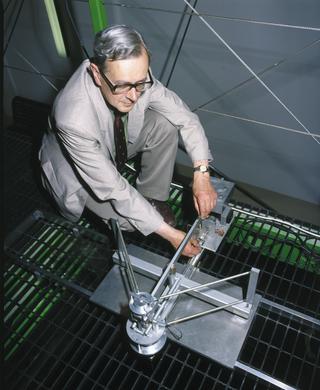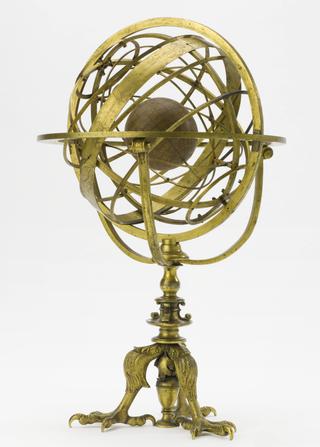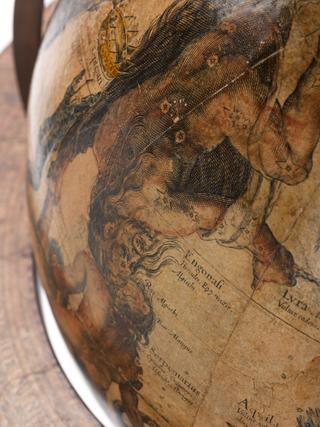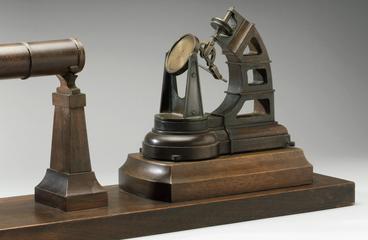
Refracting telescope on equatorial mounting
- maker:
- Jesse Ramsden and Matthew Berge
- modifier:
- Troughton and Simms Limited
Refracting telescope of 4.1-inch aperture on an English type equatorial mounting commissioned by Sir George Shuckburgh from Jesse Ramsden in 1781, though not completed until 1791. First installed at Shuckburgh's home at Shuckburgh Warwickshire, it was later given to the Royal Observatory, Greenwich in 1811 by Charles Jenkinson Shuckburgh's heir. The hour circle was re-divided by Troughton & Simms in 1860 but the stand proved too flimsy and was little used at Greenwich in later years.
Sir George Shuckburgh commissioned this telescope from Jesse Ramsden the famous London instrument maker in 1781 but was not completed until 1791. It is the world's first example of a large equatorial telescope, namely an instrument mounted for making accurate measurement of the position of the stars and planets. The telescope has a lens of 4.1-inch aperture and is carried on an equatorial mounting made of tapered brass tubing. After Shuckburgh's death in 1804, his heir donated the telescope to the Royal Observatory, Greenwich in 1811. Though designed for angular measurement the mounting of the telescope proved too flimsy and was little used despite improvements made at later dates. The instrument was finally dismantled and donated to the Science Museum in 1929.
Details
- Category:
- Astronomy
- Object Number:
- 1929-979 Pt3
- Materials:
- metal (unknown)
- Measurements:
-
Object (excl grey brackets and wooden mount): 197 kg
- type:
- telescope - refracting and equatorial instrument
- credit:
- Royal Observatory, Greenwich




